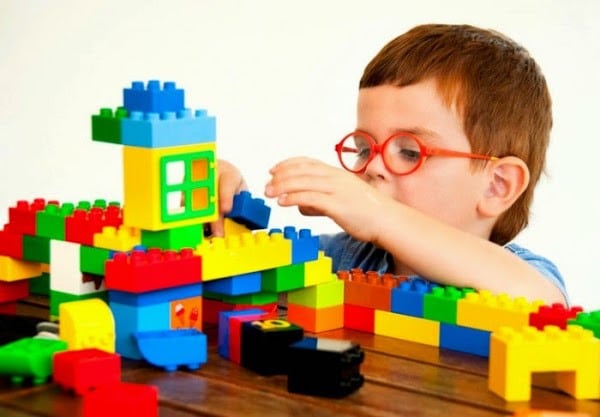Spatial intelligence is the ability to perceive and memorize simple and complex shapes, processing visual aspects and orienting oneself in the surrounding space.
Spatial intelligence, spatial IQ or visual intelligence are fundamental in many academic and professional fields, we tell you from Logos Nursery School, nursery school located in Las Rozas de Madridwhat it consists of and how to work on it.
Spatial intelligence: What is it and how to develop it?
Spatial intelligence involves understanding and remembering the relative positions of objects in the mind, which allows us to imagine their movement, rotation or transformation within our thoughts.
Therefore, the main capacity is to realize visualization and figuration of reality in thoughts and memories.
How can spatial intelligence be improved?
Blocks will be the best toy. Other games for this type of intelligence include: puzzles, "warm-cold" games, during which the child learns spatial relationships, mazes. The two chosen by us are:
Treasure map
Together we create a map of a given space, a floor or part of a park or garden, then the child dresses up as a pirate, we can prepare together the pirate's attributes in advance.
For example, a hat made of felt or paper, an eye patch, an artificial leg (e.g., from a used kitchen roll, just paint it and put it on the leg).
And we hide the treasures and mark their hiding places on the map, along with a description-legend for the map. The child follows the instructions and searches for the treasures.
Creating a city
In the apartment or in the courtyard, the child organizes various points of the city: a pharmacy, a clinic, a bakery, etc.
Games to develop visuospatial skills
It is possible to propose games in preschool or in the first years of schooling that help to enhance visuospatial skills, favoring their development. Here are some ideas, divided by types of games:
Body games
Such as bowling or basketball, which train hand-eye coordination (and thus the perception of the correct spatial distance between the child and one or more objects).
Board games
Such as memory, which involves the ability to remember the spatial position of images through visuospatial memory training.
Jigsaw puzzles, which help the child to complete an image and build it by correctly organizing the pieces that make up the figure.
Visual-perceptual games
Like the "Find the 7 differences" in which you must identify different elements present in two very similar images placed in comparison.
Graphic-engine games
Coloring drawings from an already colored model (this type of activity allows to isolate the individual components that make up an image and find it in the sheet-space yet to be colored).
Cards with paths or mazes, to follow with your finger or by drawing a line with a pencil, to identify the correct path leading to the point of arrival.
Connect the dots" cards, which train the ability to mentally represent an image and the spatial relationships between various elements.
How to train visuospatial skills: a few tips
The activities that parents and teachers can do with children to improve visuospatial skills are varied and very simple.
We can find interesting ideas in logic and puzzle magazines for children: crossword puzzles, find the differences, etc. Some games from the past such as bingo lottery, naval battle, puzzles, Tetris can be useful.
We are going to arm ourselves with paper, pencil and a lot of creativity to propose the following activities in the best possible way: copying figures of different complexity, tracing mazes, rotating and completing figures, reconstructing images, observing and following maps, etc.
A very useful exercise, to be proposed as a game, could be: to observe the composition of geometric figures built with cardboard cutouts for 30 seconds and then recreate them again.
You can let your imagination run wild with bizarre, highly customized constructions, and then ask him to reproduce them on a sheet.
Legos always remain an excellent building tool in the space, as well as a stimulus for creativity.
Many of these games are now part of an educational approach, which by now is known, the more playful it is, the more effective it becomes.

